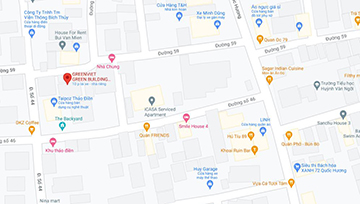Utilizing the Air Quality Index (AQI) and PM2.5: Protect Your Health and Enhance Your Workspace
Air quality significantly affects our health and well-being, particularly within our workspaces, where we spend a considerable portion of our days. Thus, it is essential to familiarize ourselves with the Air Quality Index (AQI)—an invaluable tool that quantifies and assesses air pollution levels.
What is AQI?
The AQI is a numerical scale used globally to indicate the quality of air in any given area through the measurement of five major pollutants: ground-level ozone, particulate matter (PM2.5 and PM10), carbon monoxide, sulfur dioxide, and nitrogen dioxide (U.S EPA).
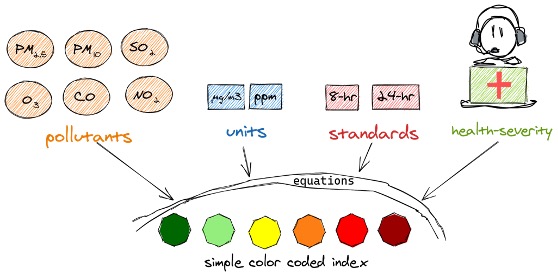
Source: Urbanemissions.info
Understanding the AQI Levels
The AQI index is divided into six categories, with a higher AQI indicating greater levels of air pollution and associated health risks (AirNow). This index also coincides with the Vietnam’s official AQI Index, as of 2019 (VEA):
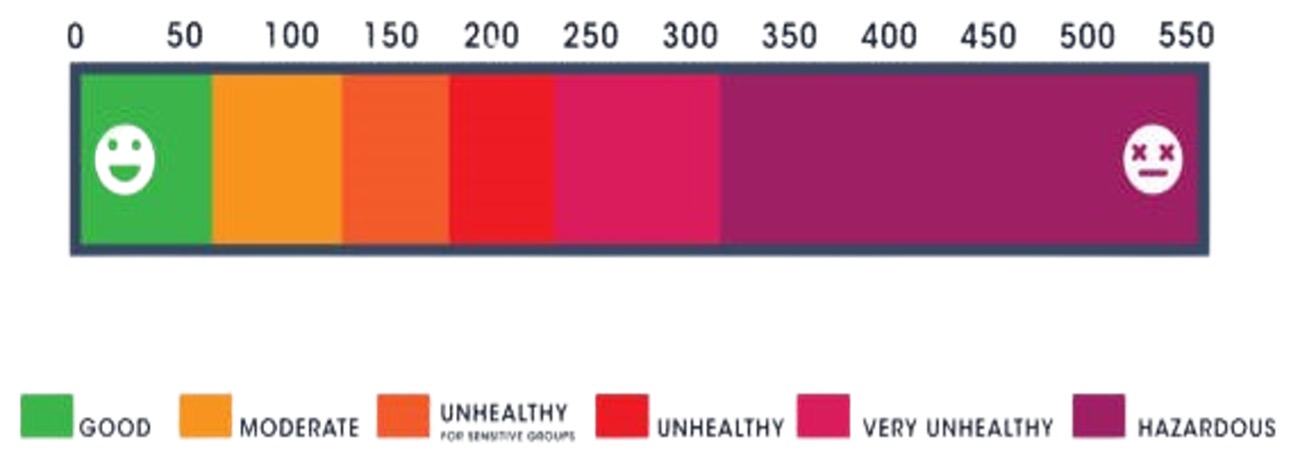
Source: AirNow
● Good (0-50): Air quality is satisfactory and poses little or no risk.
● Moderate (51-100): Air quality is acceptable. However, there may be a risk for some people, particularly those unusually sensitive to air pollution.
● Unhealthy for Sensitive Groups (101-150): Members of sensitive groups (children, the elderly, people with heart or lung diseases may experience health effects. The general public is less likely to be affected.
● Unhealthy (151-200): Some members of the general public may experience health effects; members of sensitive groups may experience more serious health effects.
● Very Unhealthy (201-300): Health alert: The risk of health effects is increased for everyone.
● Hazardous (301-500): Health warning of emergency conditions: everyone is more likely to be affected.
How is AQI calculated?
To calculate the AQI, each of these pollutants is assigned a separate AQI value, and the highest of these is chosen as the overall AQI. Each AQI value is calculated as follows (AirNow).
- The pollutant's concentration is measured over a specific period.
- This measurement is then converted into a corresponding AQI value using a formula provided by the EPA. The formula uses a piecewise linear function that links the concentration of the pollutant to the AQI value.

Source: AirNow
- Conci = Input concentration for a given pollutant
- ConcLo = The concentration breakpoint that is less than or equal to Conci
- ConcHi = The concentration breakpoint that is greater than or equal to Conci
- AQILo = The AQI value/breakpoint corresponding to ConcLo
- AQIHi = The AQI value/breakpoint corresponding to ConcHi
What’s PM, PM2.5 and PM10?
PM stands for Particulate Matter. It refers to a mixture of solid particles and liquid droplets found in the air. Some particles, such as dust, dirt, soot, or smoke, are large or dark enough to be seen with the naked eye. Others are so small they can only be detected using an electron microscope. PM can be harmful to human health, especially when it's small enough to be inhaled into the lungs.
- PM10: Dust particles with diameters from 2.5 to 10 µm (1/1,000,000 m)
- PM2.5: Dust particles with diameters less than or equal to 2.5 µm.
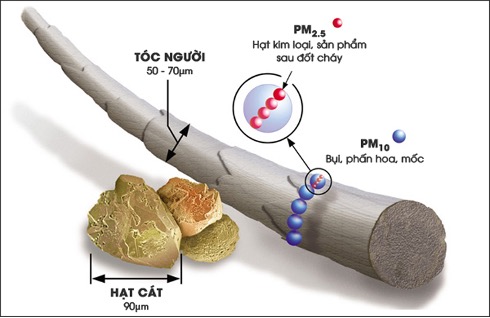
Source: AirNow
Although produced both naturally and artificially, the main sources of PM10 and PM2.5 in large cities are mostly from vehicle emissions, construction works, roads, and industrial factories.
As announced at the 2017 seminar "Air Pollution - A Threat to Community Health," the average amount of PM2.5 dust in 2016 in Ho Chi Minh City was 28.23 µg/m3, which is three times higher than the World Health Organization's standard, while in Hanoi, this figure reached up to 50.5 µg/m3, which is twice the national standard and five times higher than the WHO's average threshold (Moi Truong va Cuoc Song).
The Health Impact of Poor Air Quality
Bad air quality, whether short or long-term, outdoors or indoors, can have profound effects on health.
Per the World Health Organization (WHO), air pollution exposure directly correlates to conditions such as type 2 diabetes, obesity, systemic inflammation, Alzheimer’s disease, and dementia. A recent study also showed that long-term exposure to air pollution can have detrimental effects on every organ in the body, complicating and magnifying existing health problems (Schraufnagel et al, 2019).
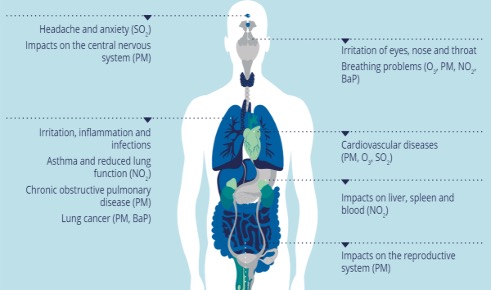
Source: EEA
Regarding PM, while PM10 enters the body through the respiratory tract and accumulates in the lungs, PM2.5 is particularly dangerous because they are small enough to slip into the lung sacs, lung veins, and penetrate the circulatory system. These fine dust particles invade the body, reduce lung function, cause chronic bronchitis, trigger asthma, and lung cancer. The International Agency for Research on Cancer acknowledges air pollution, especially PM2.5, as a primary cancer-causing agent. Specifically, if the PM10 density in the air increases by 10 µg/m3, the cancer rate increases by 22%, and if the PM2.5 density increases by 10 µg/m3, the lung cancer rate increases by 36% (IARC). It's estimated that up to 4.3 million people die each year from diseases related to PM dust pollution.
Young people and adolescents are exceptionally at risk as their bodies, organs, and immune systems are still maturing. Air pollution adversely affects health during the early years and amplifies the chances of diseases in the future. Yet, children are often unable to protect themselves or influence policies that control air quality (EEA).

It is also worth mentioning that, in indoor workspaces, lack of monitoring AQI levels can lead to many health problems, collectively called 'Sick Building Syndrome'. This is a term that was coined to describe situations in which building occupants experience acute health effects or discomfort that is linked to time spent in a particular building. For businesses, these health issues can translate into decreased employee productivity, increased sick leaves, and potential healthcare costs (Joshi, 2008). Meanwhile, when occupants move into a healthier building with better air quality, their productivity will improve (Palacios et al., 2020).
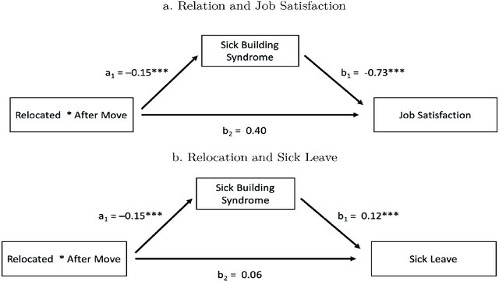
Source: Palacios et al.
Therefore, ensuring good AQI in any indoor environment is crucial, whether in your home, workplace, or public buildings.
How can I check the AQI in my area?
AQI is measured using various devices and sensors that can monitor and track the concentrations of specific pollutants. These measurements are then compared to standard or guideline values for acceptable indoor air quality, as defined by various national and international bodies.
For reference, you can check the real-time air quality ranking of major cities around the world at IQAir.com
It is also advised to equip your indoor environment (office, living space, common space, etc.) with AQI monitors such as those at our GreenViet office.

How can I protect myself from air pollution in high AQI environments?
Per the American Lung Association, depending on the AQI level in your area, you can take the following actions to reduce your exposure to air pollution and its health effects (ALA):
- Reduce the time and intensity of outdoor activity to under 30 minutes when AQI is high. The chances of being affected by air pollution increase the longer a person is active outdoors and the more strenuous the activity.
- Wear a mask. Well-fitted N95 or KN95 masks have better filtration capabilities and may be beneficial during high AQI days.
- Keep your air indoors healthy by keeping the windows and doors closed. Run the air conditioning to the recirculate setting or use a portable HEPA air cleaner.
- Follow the advice of your doctor or health care provider if you have any medical conditions that may be affected by air pollution.

Source: NPR
How can I help improve the air quality?
To enhance your AQI, you can also contribute to improving the air quality by taking the following actions to reduce your emissions of air pollutants (UNEP, Healthline):
- Mitigate your impact on air pollution by responsibly managing waste and making eco-conscious transportation choices, saving energy
- Protect yourself from the harmful effects of outdoor air pollution by regularly checking local air quality, scheduling outdoor activities outside of peak pollution hours, avoiding areas with heavy traffic, and using adequate protective measures when necessary
- Use a specialized device or kit at home to monitor levels of pollutants such as radon, carbon monoxide, mold, and volatile organic compounds (VOCs)
- Enhance indoor air circulation by keeping windows and doors open, using fans or air conditioners with open vent control, or installing an exhaust fan in areas like your kitchen or bathrooms.
- Lessen pollutant output by reducing the use of products that emit harmful fumes such as chemicals, tobacco, e-cigarettes, candles, and incense. Additionally, select furnishings and materials with low or no formaldehyde
Remember, the air you breathe matters, regardless of whether it is indoors or outside. For your well-being, ensure you’re breathing clean, quality air!
Learn more about AQI
For more information about AQI, its health effects, and how to protect yourself and others, visit the following websites:

